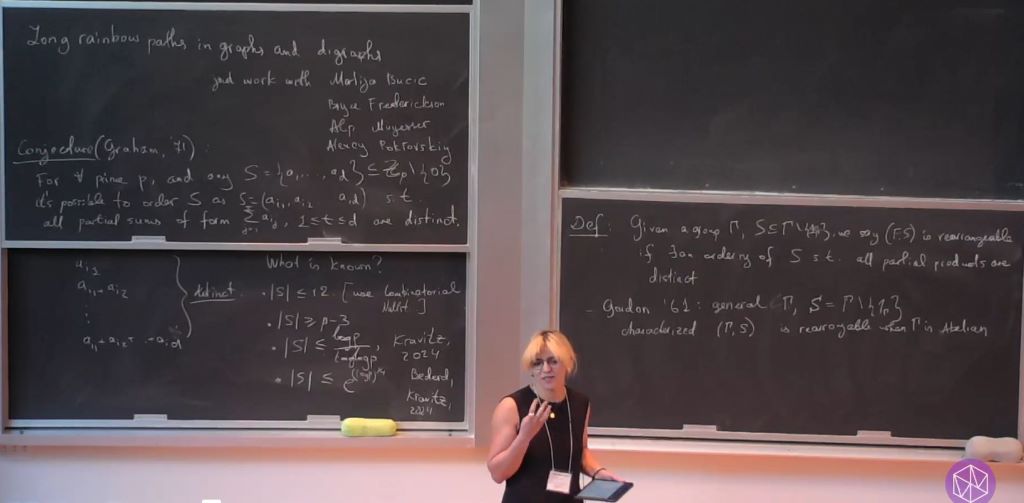Introductory Workshop - Graph Theory: Extremal, Probabilistic and Structural: Long rainbow paths in graphs and digraphs
Presenter
February 14, 2025
Keywords:
- extremal graph theory
- random graphs
- probabilistic methods
- structural graph theory
- Ramsey theory
MSC:
- 05C35 - Extremal problems in graph theory [See also 90C35]
- 05C55 - Generalized Ramsey theory [See also 05D10]
- 05C75 - Structural characterization of families of graphs
- 05C80 - Random graphs (graph-theoretic aspects) [See also 60B20]
- 05D40 - Probabilistic methods in extremal combinatorics
- including polynomial methods (combinatorial Nullstellensatz
- etc.)
Abstract
We study an old question in combinatorial group theory which can be traced back to a problem of Graham from 1971, restated by Erd\H{o}s and Graham in 1980. Given a group $\Gamma$, and some subset $S\subseteq \Gamma$, is it possible to permute $S$ as $s_1,s_2,\ldots, s_d$ so that the partial products $\prod_{1\leq i\leq t} s_i$, $t\in [d]$ are all distinct? Most of the progress towards this problem has been in the case when $\Gamma$ is a cyclic group. We show that for any group $\Gamma$ and any $S\subseteq \Gamma$, there is a permutation of $S$ where all but a vanishing proportion of the partial products are distinct, thereby establishing the first asymptotic version of Graham's conjecture under no restrictions on $\Gamma$ or $S$.
To do so, we explore a natural connection between Graham's problem and the following very natural question attributed to Schrijver. Given a $d$-regular graph $G$ properly edge-coloured with $d$ colours, is it always possible to find a rainbow path with $d-1$ edges? We settle this question asymptotically by showing one can find a rainbow path of length $d-o(d)$. A certain natural directed analogue of Schrijver's question gives further implications for Graham's conjecture.
This is based on joint work with Matija Bucic, Bryce Frederickson, Alp Müyesser and Alexey Pokrovskiy.
